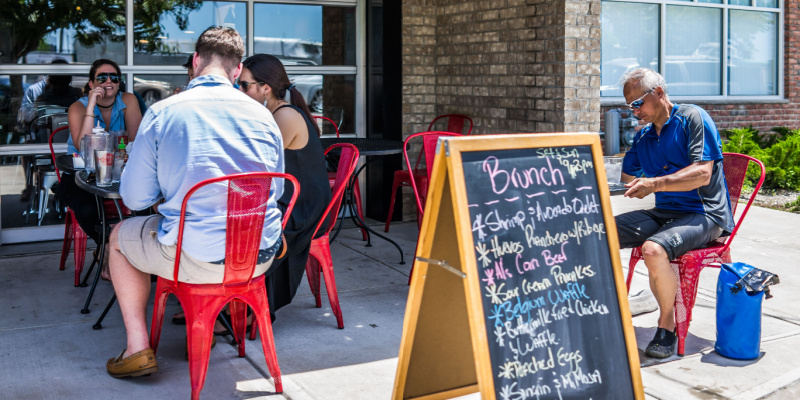Pest infestations are an unfortunate reality in urban environments like New York City. In a densely populated city where apartment living is standard, disputes over pest elimination responsibilities can be a source of contention between landlords and tenants. Understanding who is responsible for pest mangement in NYC is crucial for both parties to maintain a harmonious and pest-free living environment.
Landlord’s Responsibility
In New York City, landlords have specific legal responsibilities regarding pests. These responsibilities are outlined in the city’s housing code, and they primarily revolve around providing tenants with a habitable and pest-free living space.
1. Initial Pest Treatment
Landlords are typically responsible for addressing pest infestations when a tenant first moves in. They must ensure that the rental unit is free of pests, including common nuisances like rodents, cockroaches, and bedbugs. This initial treatment is a crucial part of the landlord’s responsibility to provide a habitable living environment.
2. Taking Action on Tenant Complaints
If a tenant reports a pest infestation, the landlord is generally responsible for addressing the issue promptly and effectively. This includes hiring professional pest elimination services if necessary.
3. Regular Extermination
Beyond the initial treatment, landlords are generally expected to maintain a pest-free environment throughout the duration of the tenant’s occupancy. This includes routine pest maintenance, such as inspections and treatments, to prevent infestations from occurring or worsening. Regular maintenance can vary depending on the building and its history of pest issues.
4. Addressing Common Areas
Landlords are responsible for pest prevention in common areas of apartment buildings. This includes lobbies, hallways, basements, and any shared spaces where pests might thrive. Ensuring that these areas are pest-free is essential for the well-being of all tenants.
5. Compliance with the Housing Maintenance Code
Landlords must comply with the New York City Housing Maintenance Code, which includes provisions related to pest prevention and maintenance standards.
6. Pest Disclosure
Before a new tenant moves in, landlords are often required to disclose any known pest infestations or treatments that have occurred in the past year.
Tenant’s Responsibility
While landlords have a significant role in pest elimination, tenants also bear certain responsibilities to maintain a pest-free living environment.
- Cleanliness and Proper Food Storage
Tenants are responsible for keeping their rental units clean and practicing proper food storage and disposal. Crumbs, food scraps, and unsealed food containers can attract pests like rodents and cockroaches. Tenants should regularly clean their living spaces, sweep up crumbs, and store food in sealed containers to minimize the risk of infestations.
- Reporting Pest Issues
Tenants should promptly report any signs of pests to their landlords. This includes sightings of pests, evidence of infestations, or suspected pest-related problems. Timely reporting allows landlords to address issues before they worsen.
- Cooperating with Pest Management Efforts
When landlords arrange for pest management treatments, tenants are expected to cooperate with the process. This may include preparing the unit by removing clutter, emptying cabinets, and following any specific instructions provided by the pest elimination professionals. Cooperation is essential for the effectiveness of pest treatments.
- Preventative Measures
Tenants can take preventative measures to minimize the risk of pest infestations. This includes using caution when acquiring used furniture or belongings, as these items can introduce pests into the home.
Disputes and Legal Recourse
In situations where there is a dispute between a landlord and a tenant regarding pest prevention responsibilities, it’s advisable to consult the lease agreement. Lease agreements can vary, and some may specify additional terms related to pest responsibilities. If an agreement cannot be reached and the issue persists, tenants have legal options to ensure their rights are protected. Tenants can file a complaint with the New York City Department of Housing Preservation and Development (HPD) to request an inspection and enforce pest removal requirements. In severe cases, tenants may also consider seeking legal counsel or mediation to resolve disputes.
In summary, the responsibility for pest elimination in NYC is a shared one, with both landlords and tenants playing crucial roles. Landlords must ensure that their rental units are pest-free when tenants move in and provide ongoing maintenance and treatment in common areas. Tenants, on the other hand, are responsible for maintaining cleanliness in their units, reporting pest issues promptly, and cooperating with pest elimination experts such as Systematic Pest Elimination. While the housing code in NYC outlines these responsibilities, lease agreements may provide additional details, so both landlords and tenants need to understand their respective roles. In situations where disputes arise, it’s advisable to seek resolution through legal channels or mediation to ensure a fair and pest-free living environment for all parties involved. Ultimately, a cooperative approach between landlords and tenants is critical to maintaining a pest-free and harmonious rental community in New York City.



